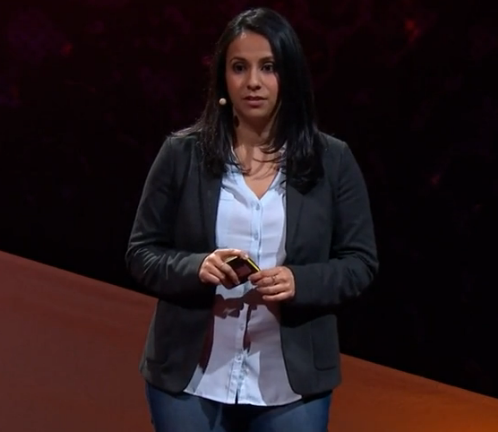Imagine that we had this magic paper.
假設這是張有魔法的紙。
So the way that this paper works is I can give you a sheet of it and if you write something on it,
當我把這張紙給你后,你在紙上寫的任何東西
it will magically appear on my piece as well.
都會出現在我的這張紙上,
Let's say we just give everyone this paper and everyone writes down the transfers that they're doing in the Bitcoin system.
假設每個人都有這張神奇的紙,當每個人都寫下他們在比特幣系統里的交易。
All of these transfers get copied around to everyone else's pieces of paper.
那每個人的紙上都會同時顯示這些交易信息。
And I can look at mine and I'll have a list of all of the transfers that are happening in the entire Bitcoin economy.
而我的紙上也會有在整個比特幣系統里發生的所有交易流程。

This is actually what's happening with the Bitcoin blockchain, which is a list of all of the transactions in Bitcoin.
實際上,在比特幣區塊鏈里發生的所有交易,就是以這種方式進行。
Except, it's not done through paper.
只是交易方式不是在紙上進行的。
It's done through computer code, running on thousands of networked computers around the world.
而是在整個世界的互聯網內成千上萬計算機里的程序里運行。
All of these computers are collectively confirming who owns what Bitcoin.
所有這些計算機都共同記錄了誰擁有多少比特幣。
So the Bitcoin blockchain is core to how Bitcoin works.
所以比特幣區塊鏈是比特幣能順利運行的關鍵。
But where do bitcoins actually come from?
但這些比特幣從哪兒來呢?
Well, the code is designed to create new Bitcoin according to a schedule.
比特幣來源于計劃好的編譯程序。
And the way that it works is that to get those Bitcoin, I have to solve a puzzle -- a random cryptographic puzzle.
想要獲得比特幣則必須解開謎題,一種隨機密碼謎題。
Imagine that we had 15 dice, and we were throwing these dice over and over again.
假如我們有15個骰子,我們不停地投擲這些骰子。
Whenever the dice come up all sixes, we say that we win.
當所有的骰子都是六時,設定為我們贏。
This is very close to what these computers are all actually doing.
這近似于所有計算機的工作模式。
They're trying over and over again to land on the right number.
計算機不停地進行運算,以得到正確的數字,
And when they do, we say that they've solved the puzzle.
當正確的數字被計算出來,我們說我們解開了“謎題”。











